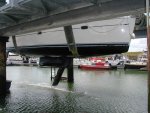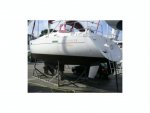dennism
New member
I was looking at some photos recently of a Jeanneau 35 and Beneteau 331 with Lifting keels.
I am interested in understanding how you sail with them. Does the Fin part need to be down when sailing a full rig or is it a matter of trimming it for the situation as one might do if sailing a dingy.
Are there any other posts / threads to read up about them anywhere please, or anyone who could enlignten me. Good bad or otherwise...thanks
I am interested in understanding how you sail with them. Does the Fin part need to be down when sailing a full rig or is it a matter of trimming it for the situation as one might do if sailing a dingy.
Are there any other posts / threads to read up about them anywhere please, or anyone who could enlignten me. Good bad or otherwise...thanks



